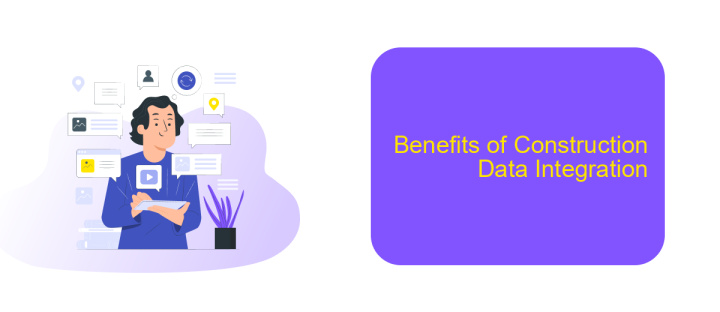Construction Data Integration
In the rapidly evolving construction industry, data integration has become a pivotal factor for success. By seamlessly merging data from various sources, construction firms can enhance project efficiency, reduce costs, and improve decision-making processes. This article explores the significance of construction data integration, its benefits, and the innovative technologies driving this transformative trend in the construction sector.
Introduction
Construction data integration is a critical aspect of modern project management, enabling seamless communication and collaboration among various stakeholders. By integrating data from different sources, construction companies can enhance productivity, reduce errors, and improve decision-making processes. This integration involves the consolidation of data from multiple platforms, such as project management tools, financial systems, and on-site monitoring devices.
- Improved data accuracy and consistency
- Enhanced collaboration among stakeholders
- Streamlined project management processes
- Real-time data access and reporting
- Reduced operational costs and delays
One effective solution for achieving construction data integration is the use of services like ApiX-Drive. This platform allows for the automation of data transfer between various applications, ensuring that all project information is up-to-date and accessible. By leveraging ApiX-Drive, construction companies can minimize manual data entry, reduce the risk of errors, and ensure that all team members have access to the most current data, thereby facilitating better project outcomes.
Data Integration Challenges in Construction

Data integration in the construction industry faces numerous challenges, primarily due to the fragmented nature of data sources and the diversity of software systems used. Construction projects often involve multiple stakeholders, including architects, engineers, contractors, and suppliers, each utilizing different tools and platforms. This disparity leads to data silos, making it difficult to achieve a seamless flow of information. Moreover, the lack of standardized data formats and protocols further complicates the integration process, resulting in inefficiencies and potential errors in project management.
To address these challenges, leveraging integration platforms like ApiX-Drive can be highly beneficial. ApiX-Drive facilitates the connection of various software systems, enabling automated data transfer and synchronization between disparate tools. This not only helps in breaking down data silos but also ensures that all stakeholders have access to up-to-date and accurate information. By streamlining data integration, ApiX-Drive enhances collaboration and decision-making, ultimately contributing to more efficient and successful construction projects.
Strategies for Construction Data Integration

Effective strategies for construction data integration are essential for enhancing project efficiency and decision-making. A well-coordinated approach ensures that data flows seamlessly across different platforms, reducing redundancies and errors.
- Identify Key Data Sources: Determine the critical data points and sources that need to be integrated, such as project management software, financial systems, and on-site sensors.
- Utilize Integration Tools: Leverage advanced integration tools like ApiX-Drive to automate data synchronization between various systems, ensuring real-time updates and accuracy.
- Standardize Data Formats: Establish common data formats and protocols to ensure compatibility and ease of integration across different platforms and software.
- Implement Data Governance: Develop robust data governance policies to maintain data quality, security, and compliance throughout the integration process.
- Monitor and Optimize: Continuously monitor the integration process and optimize it based on feedback and performance metrics to ensure long-term success.
By following these strategies, construction companies can achieve a more integrated and cohesive data environment, leading to better project outcomes and streamlined operations. Tools like ApiX-Drive play a crucial role in simplifying the integration process and ensuring data consistency across various platforms.
Benefits of Construction Data Integration

Integrating data in construction projects offers numerous advantages that streamline operations and enhance overall project efficiency. By leveraging modern technology, construction firms can consolidate various data sources, leading to improved decision-making and project management.
One of the primary benefits of construction data integration is the ability to centralize information from different departments and stakeholders. This centralization fosters better communication and collaboration, ensuring that all parties have access to up-to-date information. Additionally, data integration reduces the risk of errors and inconsistencies, which can be costly and time-consuming to rectify.
- Enhanced project visibility and transparency
- Improved accuracy and consistency of data
- Streamlined workflows and reduced manual data entry
- Better resource allocation and management
- Facilitated compliance with industry regulations
Using services like ApiX-Drive, construction companies can automate the integration process, connecting various software and platforms seamlessly. This automation not only saves time but also ensures that data flows smoothly between systems, allowing for real-time updates and more efficient project execution. With ApiX-Drive, construction firms can focus on their core activities while enjoying the benefits of a well-integrated data environment.
Conclusion
In conclusion, the integration of construction data is a critical component for enhancing efficiency, reducing costs, and improving project outcomes within the industry. By leveraging advanced technologies and data management practices, stakeholders can ensure seamless communication and collaboration across various phases of construction projects. This holistic approach not only mitigates risks but also provides a comprehensive view of project progress, enabling timely decision-making and resource allocation.
Services like ApiX-Drive play a pivotal role in facilitating these integrations by offering robust solutions that connect disparate data sources effortlessly. With ApiX-Drive, construction firms can automate data flows, synchronize information in real-time, and maintain a unified data ecosystem. This not only streamlines operations but also enhances data accuracy and reliability, ultimately contributing to the successful completion of construction projects. Embracing such integration services is essential for staying competitive in an increasingly data-driven industry.
FAQ
What is Construction Data Integration?
Why is Construction Data Integration important?
How can I integrate different construction software tools?
What are the challenges of Construction Data Integration?
How do I ensure data security during integration?
Apix-Drive will help optimize business processes, save you from a lot of routine tasks and unnecessary costs for automation, attracting additional specialists. Try setting up a free test connection with ApiX-Drive and see for yourself. Now you have to think about where to invest the freed time and money!

